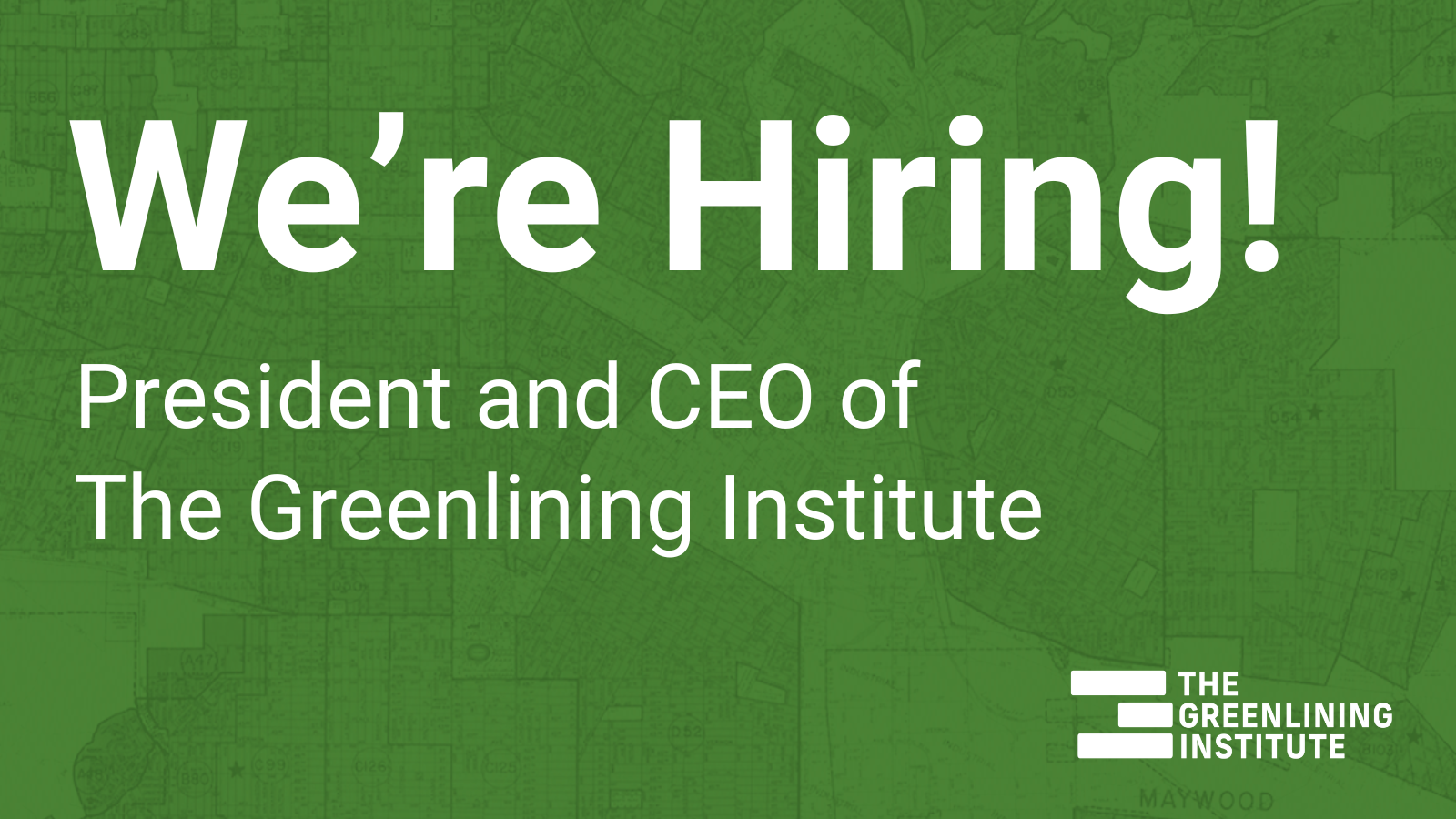The People of Color Small Business Network: Supporting Entrepreneurs in East Oakland

Next month, a collaborative pilot between The Greenlining Institute, The Alliance for Community Development and Uptima Entrepreneur Cooperative will launch, bringing coaching and technical assistance to some of the most underserved entrepreneurs in the region. Our initiative, which we’ve named the POC Small Business Network, has been made possible by funding from the Surdna Foundation, US Bank, and Community Visions CDFI, and will focus reaching Black, Latino, and immigrant entrepreneurs in East Oakland. This project, like all of the work I have done through The Greenlining Institute, is deeply personal.
As a teenager I remember riding the #40 bus line that stopped behind Eastmont Mall, where I lived. I’d climb the bus to school and watch East Oakland whiz by me, a blur of grey and dingy blue dilapidated buildings, most of them looking like ghosts of retail spaces.
I was a lonely child, and one of my joys was walking to Eastmont Mall. I filled a day up buying ice cream, peeping into the nail salons, and walking around the corridors. I loved to study all the little things on sale: a framed picture of Black Jesus with dreads, tied at the hands but looking handsome, with bright eyes. The tennis shoes on sale at Footlocker weren’t that interesting, but I loved the noisy nylon pants they sold, with the snaps down the side. Eastmont Mall is where I got my ears pierced and taught myself to ride a bike in the parking lot. The ease and contentment of walking to small businesses in my own neighborhood was irreplaceable for a child like myself.
I felt a similar joy when I would visit our neighborhood “icee lady”, a Black woman, sort of grandmotherly to me then, but probably not much older then I am now. For a quarter you could get frozen Kool-Aid in a styrofoam cup. It sounds simple, but it was glorious on summer days, and at any time, really.
As an adult, I brought my love for small business, Black folks and East Oakland with me. In joining the City of Oakland’s Business Team and The Greenlining Institute’s Economic Equity Team in 2018 as a racial equity strategist, I drew upon my childhood experiences to inform my work.
I knew that Black and Brown folks in East Oakland were entrepreneurs and business owners. I thought about the store owners in the afrocentric shop and the icee lady, alike. I understood that “hustle” and “entrepreneur” were different words for the same thing. I wanted to leverage The City’s and Greenlining’s resources to galvanize small business in East and deep East Oakland, also known as Council Districts 6 & 7.
East Oakland is one of the poorer parts of Oakland, which makes supporting small businesses and entrepreneurs a heavy lift. Although Oakland has experienced rapid and significant economic development over the last decade, it has some major exceptions, such as Districts 6 & 7. In 2016, the citywide employment rate increased by 2.5%, whereas in District 6 it declined by 2%. Median income citywide increased by 15%, but in District 6 it increased less than 2%. The East Oakland Neighborhood Initiative Community Plan reports thats East Oakland has a median income of $39,600, compared to Oakland’s citywide median income of $51,400. In 2016, the percentage of residents living in poverty in East Oakland was 30.4% versus 20% citywide.
Decades of disinvestment and discriminatory policies,like redlining and White flight, made financial insecurity a daily reality for poorer neighborhoods in Oakland. The Reserve Survey of Consumer Finances found that nationally the median Black family today owns practically no wealth — $3,600 in 2018, just 2%of the $147,000 the median White family owns. The median Latino family has assets worth $6,600 – just 4%as much as the median White family.
According to the UC Berkeley Urban Displacement Project, “Not all Oakland neighborhoods experience the threat of gentrification and displacement equally. The vast majority of Oakland’s ‘flatlands’ neighborhoods are disproportionately impacted. Nearly all neighborhoods at risk of displacement are located in the flatlands” – essentially where our majority of Black and Brown folks live. Over 87% of Oakland’s residents of color live in neighborhoods that are either at risk of, undergoing, or have already undergone, displacement.
KCET.org reports, “Black renters comprise 35% of Oakland’s renter population, they make up 45% of severely cost-burdened households. This translates to 11,645 African American households whose housing costs consume at least 50% of their income. Corresponding demographic changes are stark; just between 2000 and 2014, Oakland saw an absolute loss of 43,777 Black residents — equivalent to 31 percent of its Black population.”

It is clear that racial inequality is tied closely with geography in Oakland — as it is in most cities across America.
Small businesses are a natural entry point for the City of Oakland to bolster economic security, and the city acknowledged as much in its 2018-2020 Economic Development Strategy. One out of three high level objectives is to reduce asset poverty among Black and Latino residents by 50%, and the implementation plans are dotted with small business and entrepreneurial development for people of color, specifically in low-income communities. This makes sense.
For instance, in District 6, people of color-owned small businesses comprise more than 70% of all business owners. However, there are no banks in District 6, which hinders access to financing, and even if folks do obtain financing, rates are burdensome, if not predatory. From a citywide perspective, Prosperity Now found significant racial disparities in small business net worth, with Black businesses valued at $66,431 on average and Latino businesses at $121,780, compared to White businesses at $378,606. Given that people of color owned small businesses are the main vehicles for job growth, cultural products for the community, and sources of economic security in District 6 and 7, focusing on empowering their owners is a main avenue to reduce asset poverty.
The disparities around income and the precarity of small businesses in East Oakland make a compelling case for city officials and community organizations to promote more equitable access to economic prosperity that other neighborhoods enjoy. Basically, don’t just provide resources to Oakland, get specific and strategic about who you are serving — and where they live.
If economic disinvestment is racialized and geographically based, so must be the measures we use to address it. The Bay Area has an abundance of small business and entrepreneurial resources, but those resources don’t make it to the hood. The POC Small Business Network aims to make Oakland’s small business and entrepreneur ecosystem more accessible for Black, Latino and undocumented entrepreneurs and small businesses. The pilot’s first geographical focus will be Districts 6 and 7 in East Oakland.
Two community-based organizations will lead this work in partnership with Greenlining: The Alliance For Community Development and Uptima Entrepreneur Cooperative. Both organizations have been working with entrepreneurs and small businesses in Oakland for years, and are led by women of color. I have personally seen that their work is real but accessible. They will lead with expertise but show up for our small business community from a place from which all technical assistance services should originate: love.
The focus will be providing navigation services to help small businesses access existing public support; coaching to help them grow their businesses and more directly access the mainstream lending environment; economic resources to assist with their immediate business needs; and data collection to help Greenlining and other stakeholders determine what can be scaled from the pilot, and what still needs to be refined. Underlying this project is a commitment to centering the specific needs of Black, Latino, and immigrant businesses in East Oakland through culturally competent and high-quality services.
In addition, Greenlining and our partners anticipate that the project will:
- Produce up-to-date information on small businesses and entrepreneurs in Oakland City Council District 6 and District 7
- Provide capacity-building support to business servicing organizations that prioritize African American, Latino and immigrant small businesses to continue their vital work
- Bring an ecosystem of entrepreneur and small business resources brought to East Oakland making information easier for entrepreneurs and small businesses to understand and access
- Create smarter and more resilient businesses through navigation and emotional support, paired with business coaching and small business grants creating
- Foster opportunities to build relationships with banks and microlenders bolsters ownership, build assets and facilitate business organizing and growth in some of Oakland’s poorest neighborhoods
I live in District 6, not far from the place I grew up. Eastmont Mall does not look the same as it did when I stomped its grounds over 20 years ago, buying the tallest triple-stacked ice cream cone from Thrifty’s (btw, this fell to the ground before I could even taste any). Times have changed, but the hustle remains. Entrepreneurs and small businesses exist in our city, even on the fringes. Despite COVID, redlining, the racial wealth gap, racism and gentrification, Black and Brown people still live here. Oakland is known for its grit, resilience and tenacity — where do you think it comes from?
The POC Small Business Network intends to reinforce the resilience that has existed long before it was a concept. This pilot, its leads, its partners, and Greenlining are committed to Oakland.
To learn more about The POC Small Business Network, please visit: https://www.alliancecd.org/ or email mercedesg@greenlining.org.




